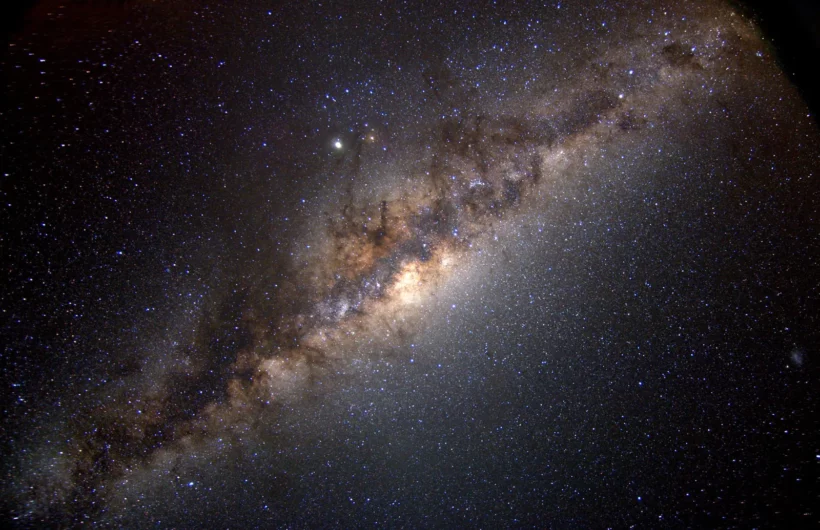Observations made with the James Webb Space Telescope have shown that disc galaxies that are less than 6 billion years old are more common than previously thought by researchers based on Hubble data.
An international group of astronomers revealed for the first time the existence of a large number of galaxies in the early universe that are similar to the Milky Way because they have the same structural component that characterises our galaxy, the University of Manchester (United Kingdom) reported on Friday.
The Milky Way is the spiral galaxy in which our solar system, and hence our planet, is located. It is known that in spiral galaxies, a vast number of stars are clustered together in the form of a thin disc, with a central spherical bulge with celestial bodies in its interior. In the galactic disc there are often luminous arms where the youngest and brightest stars are concentrated.
Scientists previously suggested that spiral galaxies were more common in the nearby (modern) universe. However, they considered these astronomical objects to be too fragile to exist in the distant Universe (before the Big Bang took place), as collisions between galaxies were more likely to occur, giving rise to galaxy formations with strange and irregular structures.
James Webb captures some of the oldest galaxies in the universe in the midst of formation
Contradicting the evolution of the universe
New research, published in The Astrophysical Journal, reports the discovery of spiral galaxies that date back to a time before the birth of the universe. These findings disagree with current theories about how galaxies evolved in the universe over the past 10 billion years.
Observations made with the James Webb Space Telescope showed that disc galaxies that are less than 6 billion years old are 10 times more common than researchers had thought based on information previously obtained with the Hubble telescope.
“For more than 30 years it was thought that these disc galaxies were rare in the early universe because of the usual violent encounters that galaxies experience,” said University of Victoria (Canada) astronomer Leonardo Ferreira, emphasising that the James Webb’s capability has provided insight into the structures of these galaxies before the universe was formed.
On the other hand, the specialists commented that these results are a sign that the galactic structure of the universe is forming much faster than expected, which changes the understanding of its origin. Professor Christopher Conselice said that these observations also raise questions about the role and properties of “dark matter in the early Universe”, as there is very little information available.










